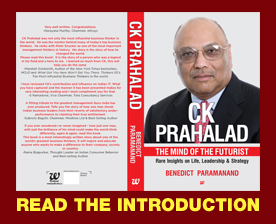 The World Economic Forum and consulting firm Deloitte Touche Tohmatsu’s September 2013 report titled ‘From the Margins to the Mainstream – Assessment of the Impact Investment Sector and Opportunities to Engage Mainstream Investors,’ has come up with strong recommendations to impress upon the investment community to boost impact investing. Its larger goal is to start the journey to transform financial paradigms for the better. Here’s a snapshot of the report:
The World Economic Forum and consulting firm Deloitte Touche Tohmatsu’s September 2013 report titled ‘From the Margins to the Mainstream – Assessment of the Impact Investment Sector and Opportunities to Engage Mainstream Investors,’ has come up with strong recommendations to impress upon the investment community to boost impact investing. Its larger goal is to start the journey to transform financial paradigms for the better. Here’s a snapshot of the report:
Impact investing – an investment approach intentionally seeking to create both financial return and positive social impact that is actively measured – has been lauded as an emerging investment approach with the potential to reconcile key shortcomings in traditional financial markets. Yet with less than US$ 40 billion of capital committed cumulatively to impact investments out of the tens of trillions in global capital, it is no surprise that many have labeled impact investing “a hype”.
The purpose of this report is also to raise awareness and knowledge among key stakeholders for taking impact investing from the margins into the mainstream. It’s true that investors have great influence over the social, environmental and economic challenges of societies, yet operate within a market infrastructure and investment ecosystem where the incentives do not generally balance social, environmental and economic impact. Impact investing is therefore an investment approach intentionally seeking to create both financial return and positive social impact that is actively measured. This approach has the potential to reconcile key shortcomings in traditional financial markets.
• Although the growth in impact investing has been driven largely by niche players, leading mainstream investors have now begun to allocate relatively small pools of capital to impact investments.
• It describes the constraints that asset owners face when considering allocation of capital to impact investments. Most of these constraints can be attributed to one of the four broad overarching challenges: early-stage ecosystem, small average deal size, fit within asset allocation framework and double bottom line.
• Mainstreaming impact investing will require a concerted effort and collaborative coordination among many participants, including impact investment funds, impact enterprises (investment targets), philanthropists and foundations, governments and financial intermediaries. The appendix recognizes that mainstream investors have a potential role to play as well, and outlines ideas for how investors that are interested in becoming more active in the impact investing sector could get started.
Short Term vs. Long Term
Does impact investing conflict with an investment committee’s fiduciary responsibilities? Impact investing need not conflict with fiduciary responsibilities; investment committees must consider those responsibilities as they craft strategies and processes to manage investments that target financial returns and superior social performance. For most institutional investors, accepting social returns that imply long-term financial concessions will not be acceptable. However, impact investing does not imply a trade-off between social outcomes and financial returns, but rather supports the simultaneous dual objective of both social impact and financial impact. In certain instances, social objectives may, in fact, create long-term sustainable financial returns.











Recent Comments